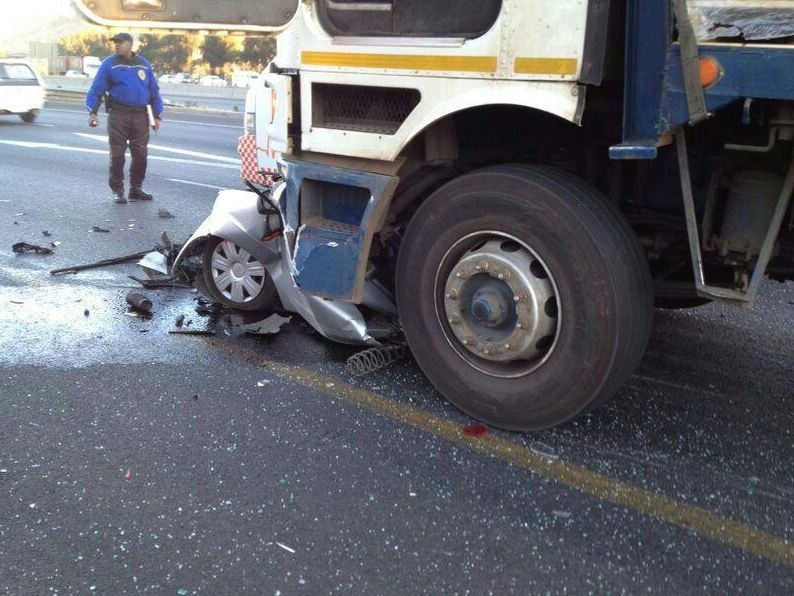We’ve all been there – looking in the rear view mirror only to see a motorist really close to the rear end of your car. It is most likely someone who is in a hurry, and who wants you to get out of the way. That’s all very well, but you can’t help to feel really unsafe when this happens. Let’s read on about safe following distances.
WHAT IS TAILGATING?
Considered aggressive driving behaviour, tailgating is the practice of following a car in front of you with very little space between the front end of your car and the rear end of the other car.
BEWARE OF FALLING INTO THE TRAP OF ROAD RAGE
Someone tailgating you may start to make you feel angry, but the last thing you must do is to tap your brakes. First of all, this can cause an unnecessary rear-end accident, but can also trigger serious road rage.
WHAT STEPS ARE INVOLVED IN A TOTAL STOPPING DISTANCE?
A motorist who has to suddenly brake to a dead stop has to consider the following steps:
- It takes 0.75 seconds for the brain to realise that there is serious danger lying ahead
- Another 0.75 seconds are required for the brain to instruct braking.
- The car itself only needs 0.05 seconds to respond
- The time it takes for the car to come to a complete stop depends on many factors such as the speed and mass of the car, the quality of the brakes, and tyres, as well as the type of road surface and its condition (tar, dirt, wet or dry).
WHAT DOES A 1.5-SECOND DELAY MEAN IN TERMS OF DISTANCE COVERED?
For you to eventually apply the brakes to bring your car to a complete stop takes 1.5 seconds. Travelling at 100 km/hour, your car will have covered 41.7 metres in that time. This distance is equivalent to about 9 car lengths, assuming that the average length of a car is about 4.5 metres.
WHY SHOULD WE BE ALWAYS ALERT WHEN DRIVING?
When following a car, we cannot always see clearly what is happening on the road in front of that car. Perhaps the car in front of you has to suddenly brake for a piece of metal lying on the road, or a stray animal. If you are following too close, what will happen next?
WHAT IS THE 2- to 3-SECOND RULE AND HOW IS IT APPLIED?
This is an international guideline used for safe following distances, irrespective of speed. It is applied by noting when a car in front of you passes by say a pole or a tree on the side of the road. The instant it does that you start counting the equivalent of 3 seconds by saying “two thousand and one, two thousand and two, two thousand and three.” If you have reached that pole or tree before you have stopped counting the 3 seconds, then you are most likely too close to the car in front of you.
WHEN TO APPLY THE RULE OF 5 TO 6 SECONDS
Use the rule of 5 to 6 seconds when driving in bad weather, on wet roads, or at night.
HOW CAN YOU ESCAPE FROM TAILGATERS?
Because road rage tends to be closely connected to tailgating incidents, rather adopt a defensive driving style. As soon as you are aware of a driver tailgating you, try and move out of the way by going into another lane. Alternatively, just slow down gradually, avoiding any sudden braking, and thus encouraging the driver to overtake you.
WHAT IF A MOTORIST CUTS YOU OFF?
If a motorist overtakes you and cuts you off, apply the brakes gently and create the required space that should be in front of you.
TAILGATING IS ILLEGAL
Tailgating can get you a fine according to the South Africa’s National Road Traffic Regulations. In addition, you may be held responsible should you have a rear-end crash as a result of driving too close to the car in front.
So, following a car at a safe distance is not only to avoid road rage. The law and the 3-second rule are there to help us to have enough time and distance to react and not smash into the rear end of the car in front. Have you considered taking out car insurance, so that you are covered when something unexpected happens?
Following Distances and Road Crashes – What is a Safe Following Distance and when do we need to Increase our Following Distance? https://t.co/kAT9HxEEfV #ArriveAlive #FollowingDistance @DoTransport @TrafficRTMC @RAF_SA pic.twitter.com/OBevHlNKy7
— Arrive Alive (@_ArriveAlive) November 8, 2018
